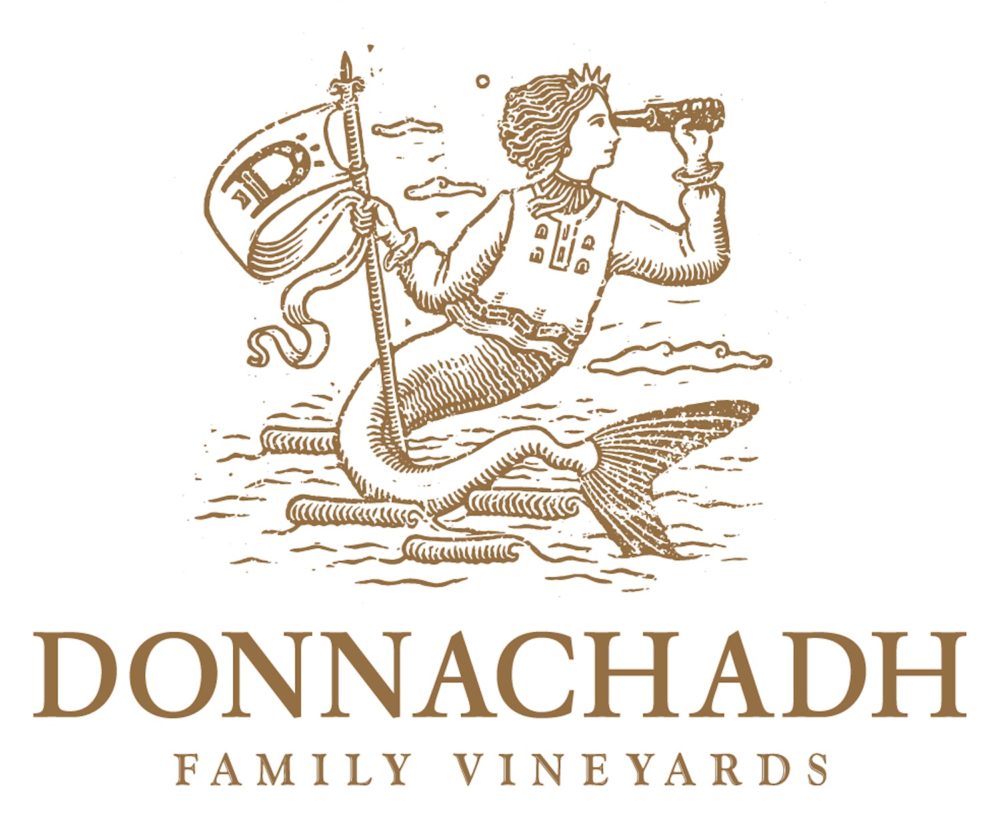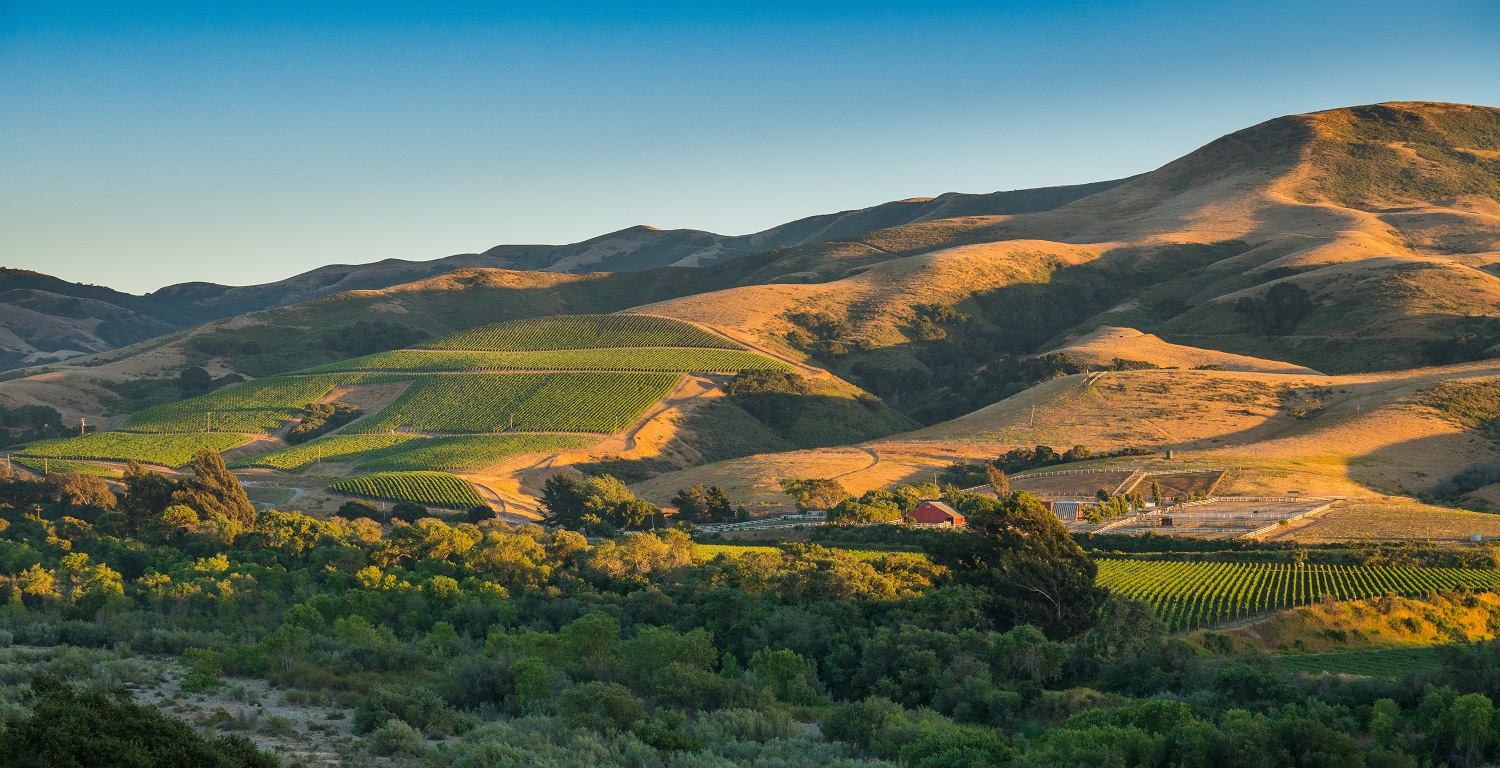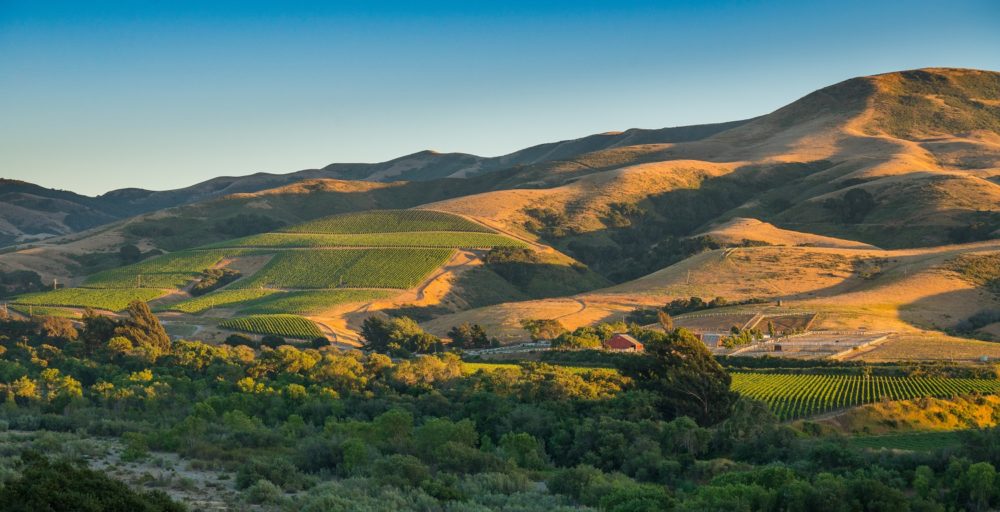
“Not the best day for a vineyard visit,” Drew Duncan says, exiting his truck as we meet in a muddy turnout at the entrance to Donnachadh estate in the Sta. Rita Hills appellation of Santa Barbara County. I’ve parked alongside him and walk through a bed of slippery mud to reach his outstretched hand. His hair is wet from the rain.
We exchange greetings and some flustered chuckles, as we navigate our upcoming day together. We had intended to begin our time together with a tour through the Donnachadh estate, block by block. An unprecedented rainstorm has visited the region, on the heels of severe heat spikes just days earlier, and it’s coming down at a good clip. Duncan invites me to sit with him in his truck instead. He’ll attempt to explain the breadth of their estate from the front seat through fogged up windows.
As he’s pointing out landscape features and aspects, I notice a tattoo on his upper arm – Disce Pati – and ask him about it. “Learn to suffer. Learn to endure.” The sentiment appears on the Duncan family crest – Donnachadh is Gaelic for Duncan – along with a ship prevailing against rough seas. “The Pacific is our saving grace,” he adds. “It’s the contrast between the warm sun and the cool ocean air, the struggle between those two elements, warm and cool at the same time, that adds tension to these wines.” The day’s inclement weather has otherwise hardly dampened our day. This part of the Sta. Rita Hills is gorgeous, with ample tree life, indigenous grasses, canyon lands, and hilltops, some of them obscured by an ocean fog surrounding us. It’s wild country, with frequent sightings of bobcats, mountain lions, foxes, coyotes, and many raptors – owls the most common among them.
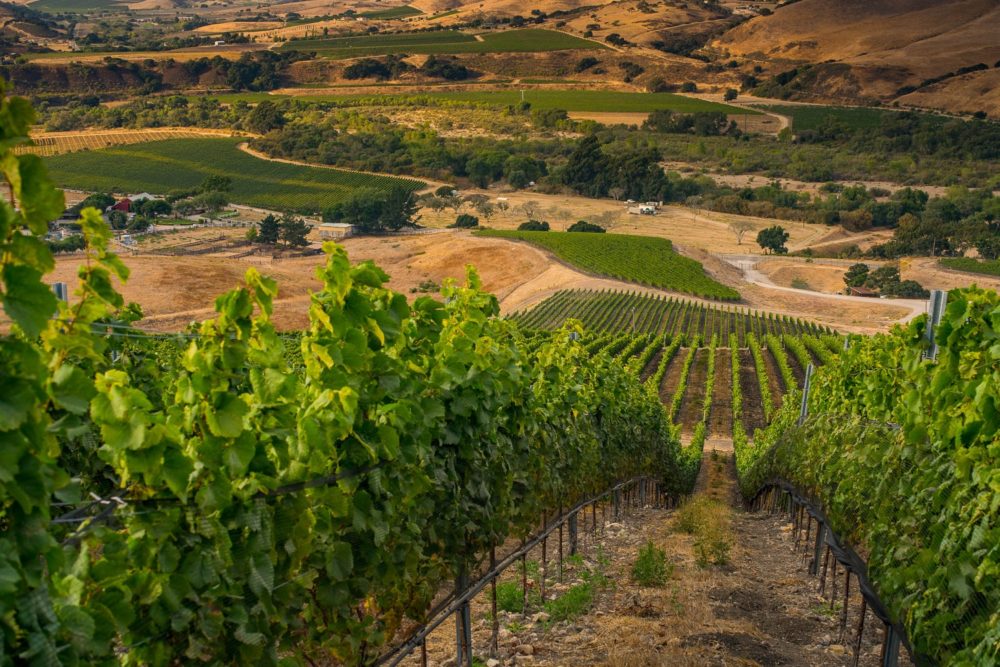
Donnachadh estate
Duncan and his wife Laurie established the Donnachadh (“DON nuh kuh”) estate in 2013. Together since high school, the Duncans fell in love with wine at the University of Texas, where they enrolled in a wine appreciation class while attending graduate school. Laurie studied Geology and later became a Geology professor, while Drew studied Plant and Forest Ecology. When I ask him why they got into the wine business, Duncan begins by saying, “There is no shortage of great wines in the world.” Having enjoyed many global benchmarks and lesser wines alike, they were inspired by the people and places that produced them. After searching the Pacific Northwest for the ideal location to establish a vineyard, they couldn’t resist the call of Sta. Rita Hills. “There’s a great wine culture here,” he says. And indeed, the neighboring vineyards include Eleven Confessions (Sine Qua Non), Peake, Sanford, Alma Rosa, Fiddlestix, Evans Ranch and, further down around the next bend, the Hilt Estate, offering one of the region’s most sought-out hospitality experiences. Duncan was confident they could produce wines of terroir from this stretch of land. “These wines are driven by the sea. The air, soil, wind. Those ancient marine soils. We have an eternal fascination with the strength, beauty, and mystery of nature.”
The 285-acre estate, of which 40 acres are under vine, is certified organic and stretches across both sides of Santa Rosa Road, one of two major viticultural corridors in this appellation (the other being Hwy. 246). On the river side of the road are the estate’s Grenache plantings, under vine atop a small island in the Santa Ynez riverbed. Though they haven’t yet released a Grenache, the Donnachadh team is confident in the potential of this small block, anticipating its name – “Rock Island”– once it comes to fruition. A few other varieties are also planted along the riverbank, in beds of well-drained sandy loam atop deep layers of gravel river deposits.
Across the road their Chardonnay, Pinot Noir and Syrah plantings confer a lilting frame to the estate’s hilltop and hillsides. The soil is different on the hillside blocks, with marine shale deposits featuring clay, rocks, and cobbles. The hillside blocks are exposed to sometimes-unrelenting oceanic winds, sculpting the vines into low-yielding plants producing fruit of intense character.
Over the past nine years, this relatively young estate has become popular among the sommelier culture and the wine cognoscenti for its lean, austere, yet pleasurable Old World-style wines. Winemaker Ernst Storm (Storm Wines, Grimm’s Bluff) joined the Duncans at the estate’s inception and has directed the wine program mindfully. His own house style as a brand owner and consulting winemaker favors balanced, bright wines with a bracing acid signature, pleasing texture, and good structure. Barring particularly challenging vintages, his wines typically demonstrate great length and focus, and his hallmark approach is never more evident than in the Donnachadh lineup.
When the truck cab begins to feel a bit claustrophobic for both of us, Duncan suggests we drive out to their winery in the Santa Maria Valley. We take separate cars, as he’ll swing by Bob’s Well Bread Bakery in the small township of Los Alamos to pick up sandwiches for our lunch.
As I approach the Santa Maria Valley AVA, I take the Clark Road exit off Hwy. 101, and in just over a country mile I arrive at the small, modest winery. The driveway and pathways leading to the winery’s crush pad are all muddy, as the rain is coming down even harder in this appellation. Winemaker Ernst Storm, wine-stained and drenched, greets me as he clears off a messy worktable.
Loud music plays. Alexi Murdoch. All of My Days. Storm’s boxer, curious and energetic, is never far from him and follows him around as he grabs bottles of wine, clean glasses, spit cups, a dump bucket. While we wait for Duncan to return, he pours me the 2018 Donnachadh Estate Chardonnay. I’m immediately drawn to the brisk, cool aromatics – saline, lemon pith, oyster shell, seaweed, pear. I tell Storm I enjoy the aromatics. “The most important decisions I make here are the picking decisions,” he says. “We pick at low brix. We’re not afraid of acid.” When I ask him what it’s like consulting for this project, he says, “They’re doing things the right way. They consistently put out a balanced crop.”
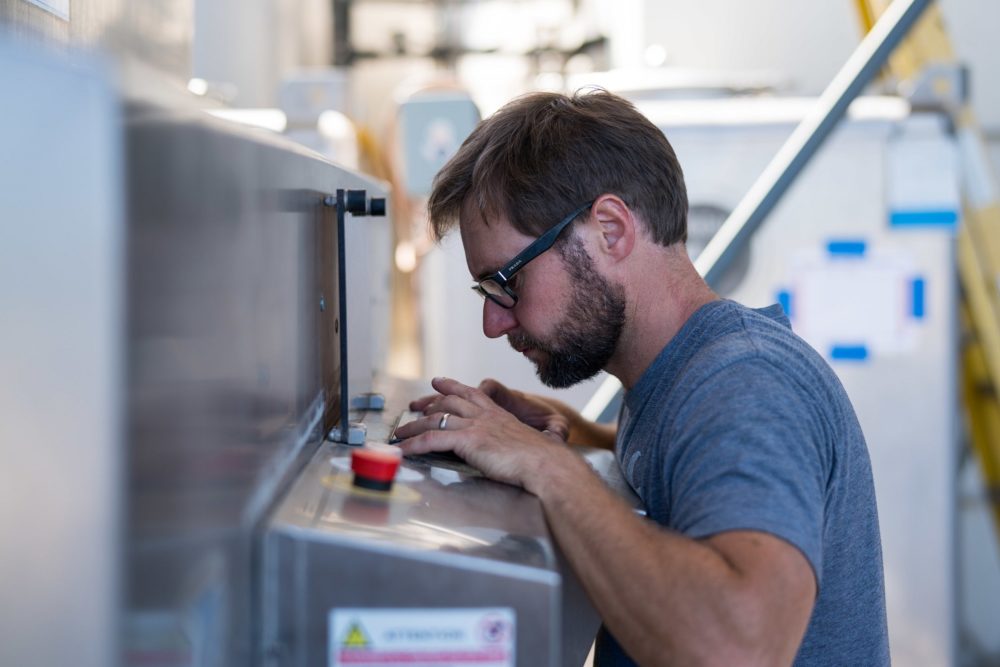
Ernst Storm
By the time Duncan returns, I’ve tasted through most of the Donnachadh core lineup, as well as their more affordable appellation series, which they refer to internally as “SRH.” The collection is texturally compelling, vibrant, and fresh. I re-taste through the entire line up as we share lunch. The 2019 Donnachadh Estate Syrah reminds me of a good Northern Rhône, especially from the early aughts and prior, when producers like Allemand and Clape were making wines that favored elegance and finesse over power and extraction. The 2018 and 2019 Donnachadh Estate Pinot Noirs are a study in typicity, focus, spice, and precision. “People making classic wines in Santa Barbara County are competing with Burgundy,” Storm says with confidence. He goes on to explain that, especially in the Scandinavian countries, consumers are substituting Burgundies with the wines of Santa Barbara County. On a recent trip to Oslo, he tells me, he ate at a popular restaurant where there were bottles of Santa Barbra County wine at nearly every table. “They’re buying Santa Barbara instead of Burgundy because they don’t have to spend as much for wines that are as beautiful, as good.”
We enjoy beef cheek sandwiches and salad as we continue to taste the wines. It turns out they are made for food, though this shouldn’t come as a surprise. The Duncans have long enjoyed tasting fine wines, and most often accompanying a meal. The signature freshness of these wines invites food, as becomes evident as I have the Syrah with my sandwich – a rich sandwich that is made more tenable by the Syrah’s natural, invigorating acidity.
Today many smaller wineries enter the market deciding to sell their wines almost exclusively through the Direct-to-Consumer channel. Conversely, when Donnachadh launched almost a decade ago, part of their strategy was pursuing the wholesale channel: BTG (by-the-glass) placements in popular eateries, placements with reputable indy retailers, etc. Contemporarily, the Donnachadh team is establishing a DtC profile, with a tasting room opening soon in the charming township of Los Olivos, one of the more popular destinations in Santa Barbara wine country.
By the time we wrap up lunch and finish up our tasting, dark storm clouds have taken up residence in the sky above Santa Maria Valley. When I turn onto Clark Road, two fast-moving streams course down both sides of the road. I’m returning home with two nearly empty bottles of Donnachadh Pinot Noir – an estate and an SRH. In three days’ time, when I try them again, they’ll both have retained their initial vibrancy and focus. A distinctive spice, underbrush and chaparral profile rises from the glass, tireless and energetic, as happens with wines of terroir.
